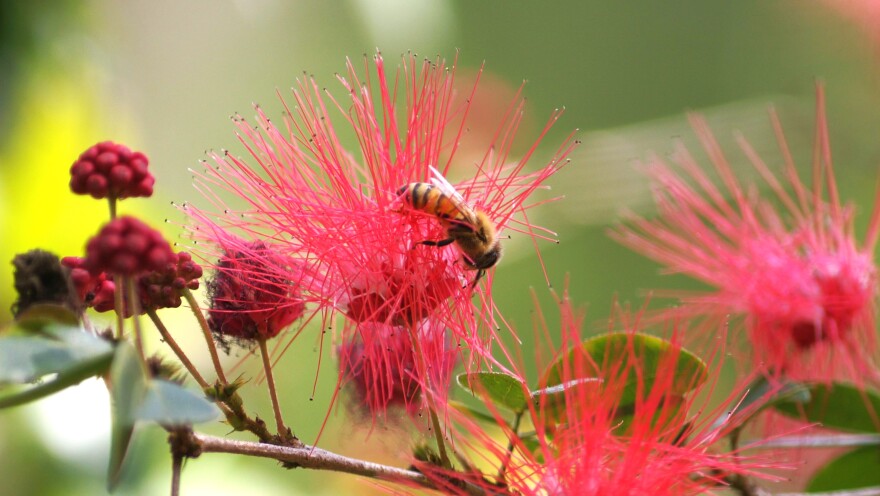You may have noticed fewer bees flying around your yard this summer.
The U.S. Department of Agriculture reported this month that two viruses were identified as the reason for recent nationwide bee colony losses.
The viruses are carried by Varroa mites, which are becoming increasingly resistant to amitraz, a miticide commonly used at apiaries.
Rein Verbeek of Verbeeks' Bees has been a beekeeper since 2014. He is also a Florida State Beekeepers Association representative and the Tampa Bay Beekeepers Association’s treasurer.
Verbeek has been rebuilding his apiary after last year’s hurricane season, which left him with six out of 52 hives. His apiary is back to about 30 hives.
“Honestly, I don't know yet how I'm going to combat this year's season,” Verbeek said. “My beehives are anywhere between 16 to 24 inches off the ground already, and that was not solid enough last year to survive.”
Restarting this season is bringing even more challenges.
Verbeek said the spring was extremely dry, which made it harder to cultivate hives and rebuild the ones that were damaged.
The weather also impacted how well the colonies could build up again and become larger.
“When you look outside and you look at the front of your vehicle, how many insects do you have stuck to your grill right now? There is an overall decline of insects, and the honeybees [are] included in it,” he said.
Wayward queens contribute to hive losses
Verbeek explained that sometimes more losses can occur when the queen bees can’t find their way back to the hive and end up splitting colonies.
“I have seen larger losses than I normally see, but I think that that is mainly because of what I'm trying to accomplish at the moment,” he said.

But Verbeek knows of beekeepers who are experiencing a “ridiculously” high number hive losses this year due to the mites.
“I have heard of people that have lost 90% of their bees, and they had a very strong operation going, and then all of a sudden they were down,” he said.
And in some cases, the mites struck quickly.
“They were inspected a week before and everything looked fine, and then a week and a half later, all of a sudden, all the bees are either gone or there's just a little bit of bees left,” Verbeek said.
He said some beekeepers tried to recuperate from losses by buying more hives or canceling pollination contracts and rebuilding at their own pace.
Verbeek said he doesn’t use amitraz at his apiary. Instead, he uses oxalic acid because he said it is a “more gentle” approach to the bees.
But commercial beekeepers don’t often have that option.
“They have to use the stronger chemicals because they cannot go into the hives as often as a hobbyist can,” he said.
Verbeek said some beekeepers are using a mixture of methods so that there isn’t just a one-handed approach that mites might become more resistant to, like they have with amitraz.
Lack of crop diversity leads to stress
The USDA reported that researchers are still on the lookout for things other than mites that could be affecting hives.
Verbeek said a lot of the environmental stressors are caused by a lack of diversity in the crops that the bees are put on.
“If there's a lot of monoculture happening, there's nothing for the bees to go to other than the crop that they are pollinating,” he said.
Smaller beekeepers usually have a greater variety of flowers and items around that the bees can go to and harvest, he said.
Verbeek said many beekeeping organizations have been trying to educate farmers about the importance of planting more than one crop.
“So maybe have a line of wild flowers in with your fields of watermelons,” he said. “It gives [the bees] the diversity to work with.”
People should be worried about the decline in bees because they are essential pollinators that help with the national food supply, Verbeek said.
"It's one of the first indicators that sometimes rings the bell and says, 'Hey, something is happening here,’ ” Verbeek said. “The more that you can be aware of what is happening in the environment, the better it is going to be for you in the long run.”





